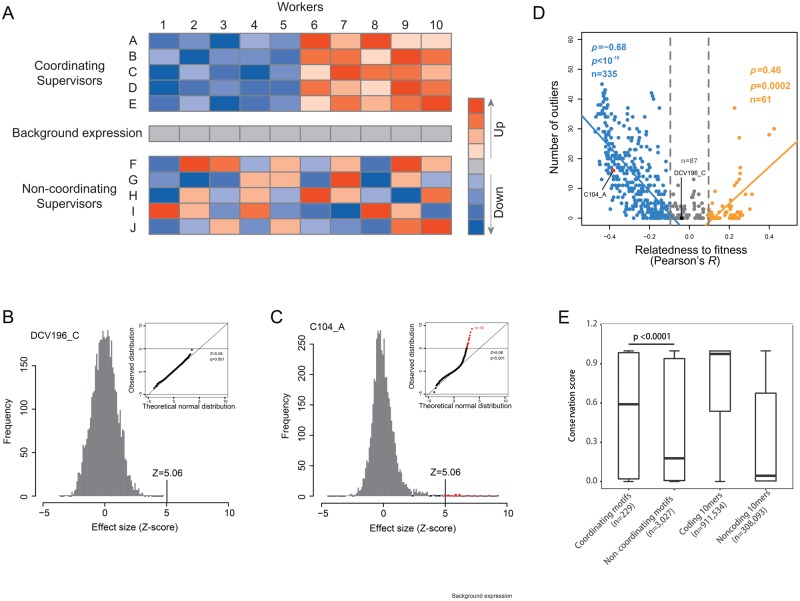Fig. 5.
Genes showing outlier effects are found primarily for fitness-coupled traits. (A) A cartoon shows the proposed feature of coordinating versus noncoordinating supervisors. Coordinating supervisors with congruent regulation profiles are able to build an “expression linkage” of the workers to ensure worker co-expression, whereas noncoordinating supervisors with incongruent regulation profiles would break such expression linkage. (B) Frequency distribution of the effect sizes and a Q–Q plot comparing this distribution with the Gaussian approximation for trait DCV196_C. (C) The same parameters are shown as in Panel B, except for trait C104_A in which some outlier effects (highlighted in red) are found. (D) Fitness coupling determines outlier number. Each dot represents a trait, and a total of 483 trait are included. (E) Coordinating motifs are more conserved than noncoordinating motifs. Box plots of the conservation scores of coordinating motifs, noncoordinating motifs, 10-mer random sequences picked from coding regions of Saccharomyces cerevisiae, and 10-mer random sequences picked from noncoding regions of S. cerevisiae, respectively. Box-plots are presented with the horizontal bold line showing the median. Mann–Whitney U test was used to compute the P-value.

